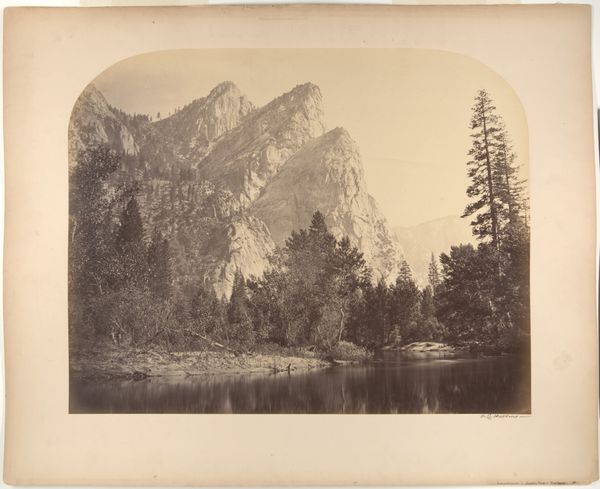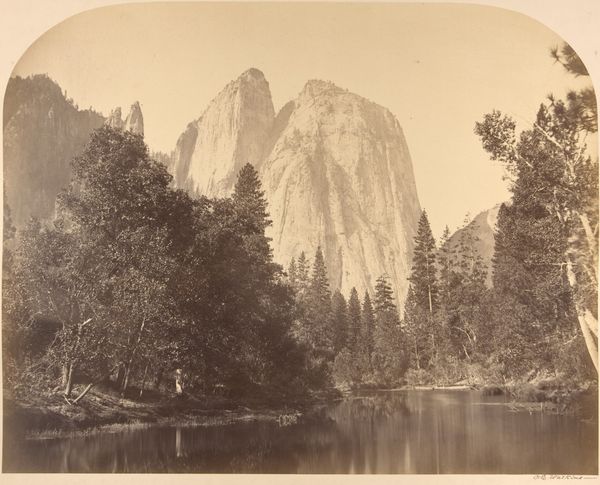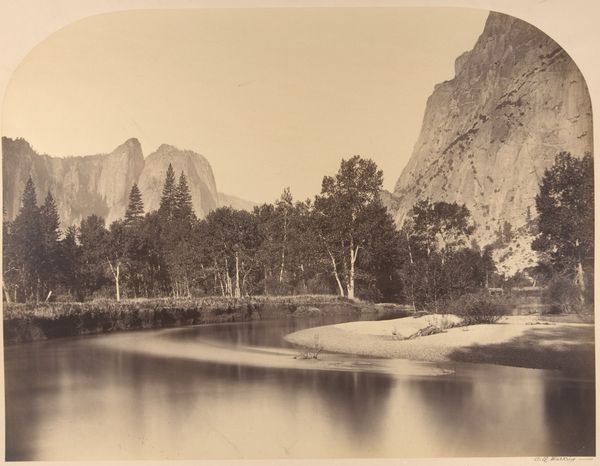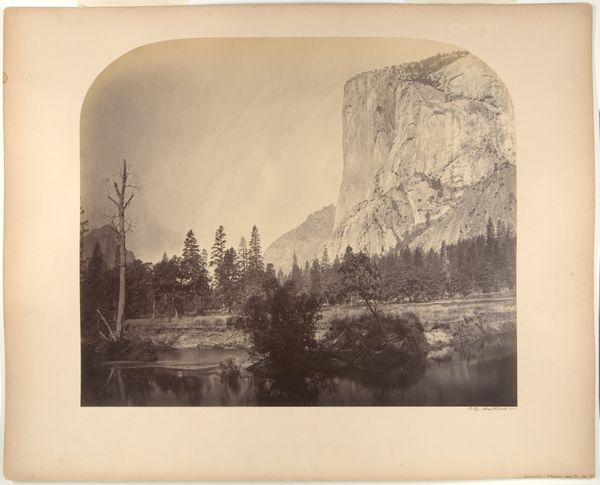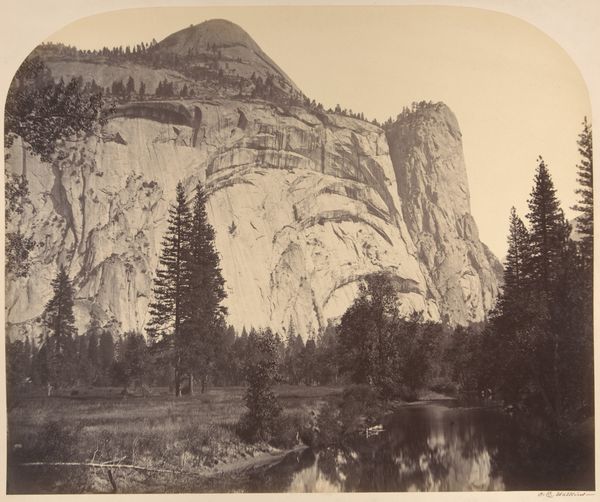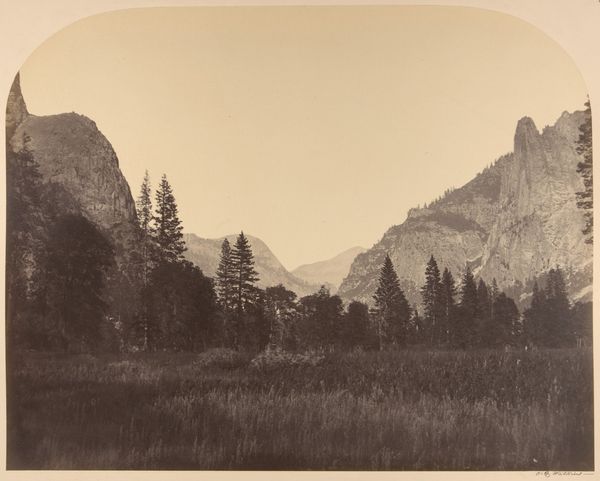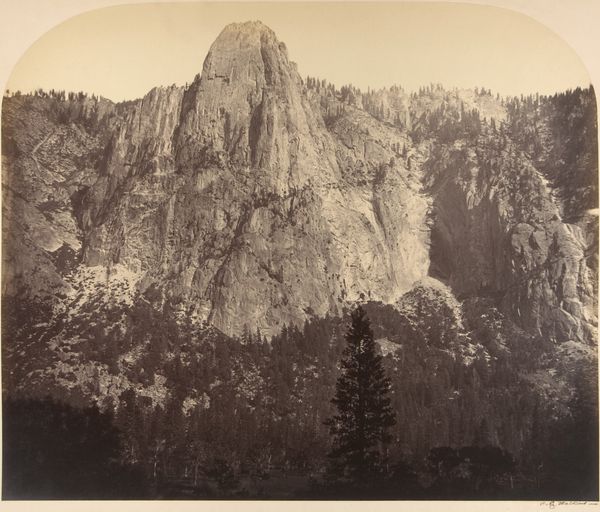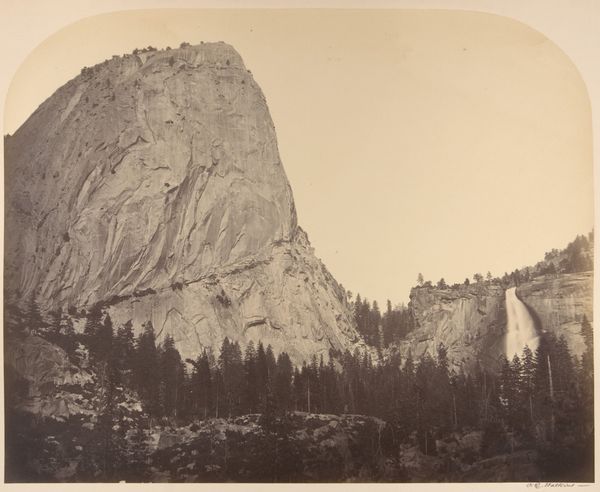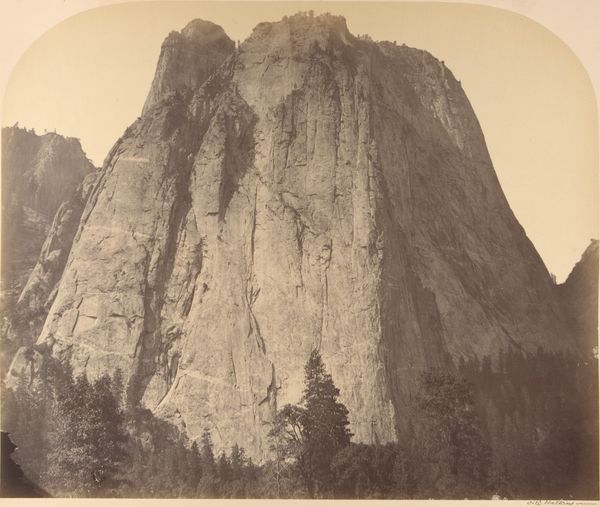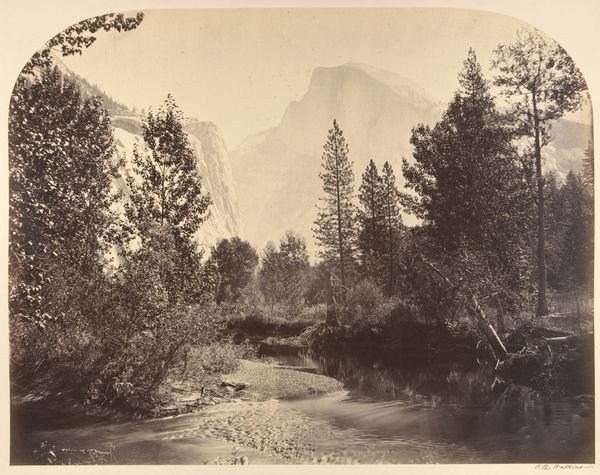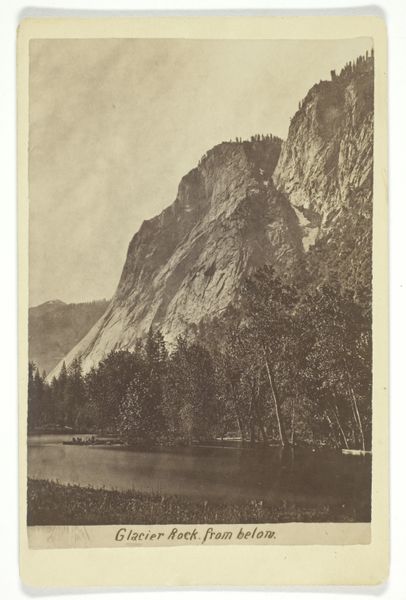
photography, gelatin-silver-print
#
landscape
#
waterfall
#
river
#
photography
#
mountain
#
gelatin-silver-print
#
hudson-river-school
#
water
Dimensions: Image: 16 1/2 × 19 1/2 in. (41.9 × 49.5 cm) Mount: 21 1/4 × 26 3/8 in. (54 × 67 cm)
Copyright: Public Domain
Editor: This is Carleton Watkins' photograph, "Yosemite Falls, River View, 2637 Feet," a gelatin-silver print from 1861. It strikes me as a study in contrasts: the soft, almost hazy river view against the sharp, monumental granite cliffs. What do you see in this composition? Curator: The photograph certainly presents a compelling interplay of textures. Observe how the tonal range orchestrates depth, leading the eye from the quiescent river surface towards the cascading waterfall. The light, skillfully manipulated, serves not only to reveal the topographical details but also to establish a visual hierarchy. Consider, then, how Watkins uses the very materiality of his medium—the gradations within the gelatin silver print—to articulate spatial relations. Editor: I hadn't considered how much the materiality itself contributes to the sense of depth. Are you suggesting the photograph is more about form than, say, the sublime power of nature, which is what I initially felt? Curator: The notion of the sublime is interesting, but if we suspend focus on that subject briefly and concentrate on the visual elements, we discover a sophisticated manipulation of perspective. Watkins isn’t simply recording; he’s constructing a visual experience through careful framing, contrast, and textural differentiation. What structural elements do you perceive, shaping your viewing experience? Editor: Now that you point it out, the placement of the dark trees in the foreground acting as a frame is a conscious decision. I suppose focusing on those formal elements reveals the artifice in the image. Curator: Precisely. This underscores how attention to composition is important to how a landscape's monumentality can be communicated. The stark contrasts further this monumentality as they interact across the plane. I am now struck with a deeper recognition of intentional artistry at play in Watkins' work. Editor: Seeing it that way opens up new avenues for appreciation. I now understand better how close visual analysis helps one grasp and decode art, a lesson I'll surely apply to my studies.
Comments
No comments
Be the first to comment and join the conversation on the ultimate creative platform.
